HTC One max Review - It's Huge
by Brian Klug on October 28, 2013 10:00 AM EST- Posted in
- Smartphones
- HTC
- Mobile
- One
- Snapdragon 600
- Android 4.3
- One max
The One max joins a small but growing list of phones that include a fingerprint scanner for unlocking the device. I’ll leave the discussion about whether fingerprints are fundamentally usernames or passwords for another day, but fingerprint scanners seem to be in vogue right now for mobile phones. You could make the case that the perceived increase in security that comes with fingerprint scanners is both an enterprise or consumer play, again I’ll leave that philosophical discussion for another day. I remember the Motorola Atrix and its fingerprint scanner being a big deal a while ago, since then we’ve had the iPhone 5s dramatically reintroduce the fingerprint scanner and now the One max follow suit.
The One max fingerprint sensor is a swipe type, meaning there’s some kind of strip sensor inside that you swipe your finger across. Sliding your finger over this strip allows the module to scan a 2D region and extract features that are then used to identify a fingerprint. The One max hides this scanner inside a black square that’s slightly recessed on the back of the device, just beneath the camera. I’m reminded somewhat of the LG G2 and its rear-mounted power and volume buttons which also sit just beneath the rear-facing camera. Perhaps that’s a missed opportunity for LG, which could have also gone with a swipe type sensor in its power button. On the One max anyhow there’s no button, just the sensor. Although the fingerprint sensor is recessed slightly, it’s somewhat difficult to locate with just one’s index finger, something that results in inadvertent smudging of the rear-facing camera cover glass, something that didn’t happen as much with the G2 because there’s a larger lip and easily locatable bump.
The placement of the fingerprint sensor makes sense given that of the power button. As stated earlier for right handed users this means your index finger sits naturally near the sensor if your thumb is on the power button. Since the fingerprint button still requires activation to unlock the One max, you still need to press power to turn it on before you can swipe your finger and finally unlock it. I find myself wishing the fingerprint sensor was itself a button, something like the iPhone 5s, so unlocking could be as simple as pressing and swiping with the same finger. On the iPhone 5s the best activation pattern is pressing the home button and leaving the finger in contact with the button.
Setup requires you to set a passcode, after which a few training swipes trains the sensor for the finger you’ve chosen. Although the animation that plays shows the finger aligned along the long axis of the phone, for greater accuracy I trained the One max with my finger at the angle it would naturally be given my thumb on the power button. The only requirement given the swipe sensor is that the slide motion is straight down and not skewed.
The One max fingerprint sensor allows for up to 3 fingers to be paired, each able to either unlock or have the option of both unlocking and launching an application. I like the idea of fingerprints as shortcuts, something the iPhone 5s implementation lacks, but three fingers seems like a curiously low number given the ten digits humans have to work with. On the other hand, the placement of the button really limits you to middle and index fingers being viable options. In terms of functionality, although Apple doesn’t yet use fingerprints as shortcuts, Apple does use the fingerprint scanner to authenticate iTunes, iBooks, and App Store purchases, something HTC can’t quite do with the One max for Google Play purchases, at least until Google makes an API for it.
I initially trained the fingerprint sensor with my index finger being swiped straight down, and had some issues with unlocks requiring multiple swipes. Doing finger enrollment and training at an angle closer to how I actually swipe it naturally (at an angle) made the accuracy better, but the reality is that unlocking the One max still requires multiple tries more often than not. There isn’t much processing latency after a scan, but I had hoped the One max sensor would be tap and hold rather than swipe given its shape. I’m not clear what suppliers are involved for the sensor, but I’m told the One max also securely stores just the extracted features and not the fingerprint images (which is a no brainer). I haven’t delved much into the infrastructure used to secure the fingerprint features yet either. I’m also not sure whether the One max learns additional parts of the finger which wasn’t part of initial training the same way Apple’s does.
Although I don’t think anyone has totally nailed the fingerprint sensor yet on a device, the One max implementation definitely is further from perfection than Apple’s. Although it does work reasonably well, it still isn’t the transparent kind of convenience that I feel will compel users who ordinarily wouldn’t have to used a passcode to go and use the fingerprint scanner. I’ve continued using the fingerprint scanner on the One max, however.


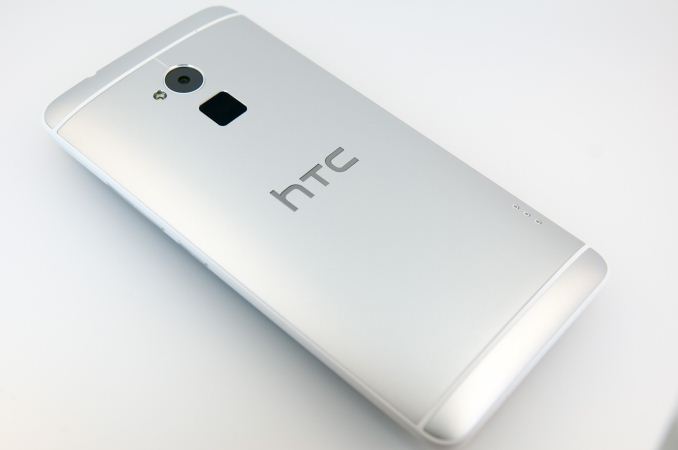
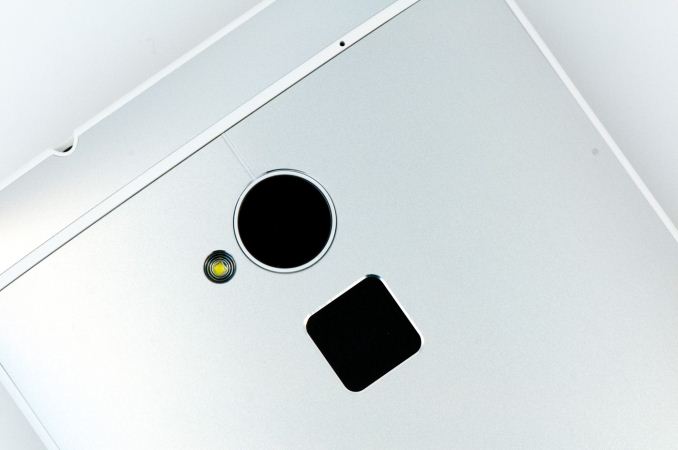
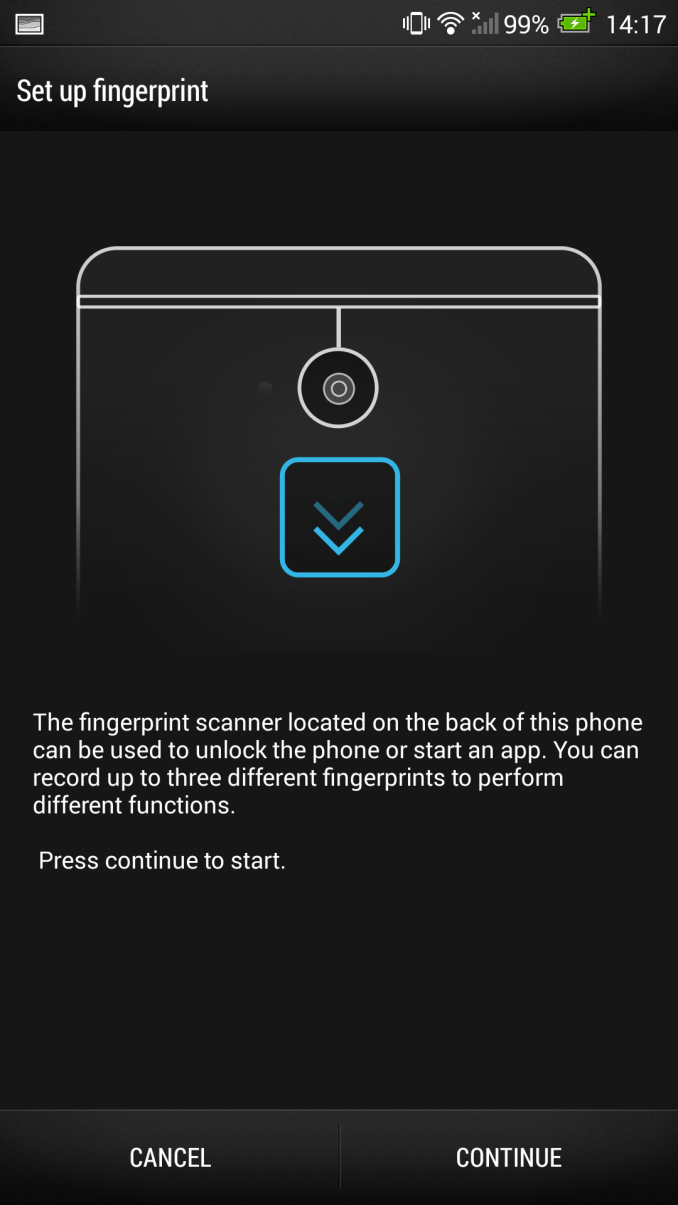
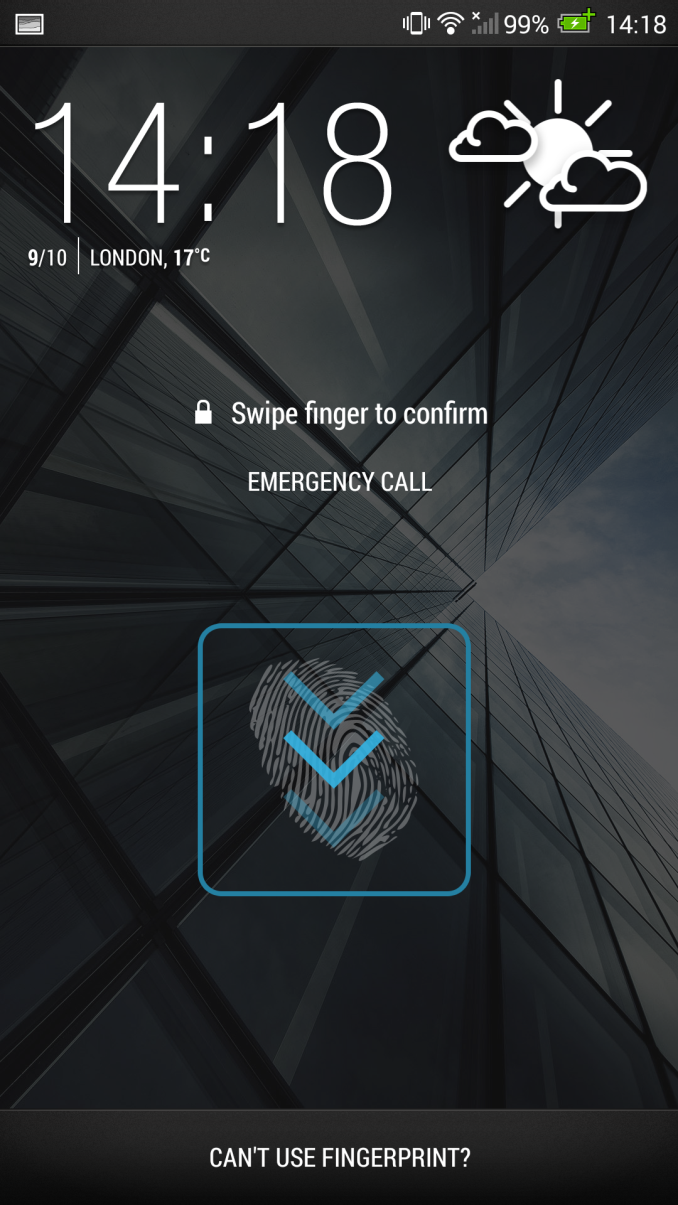

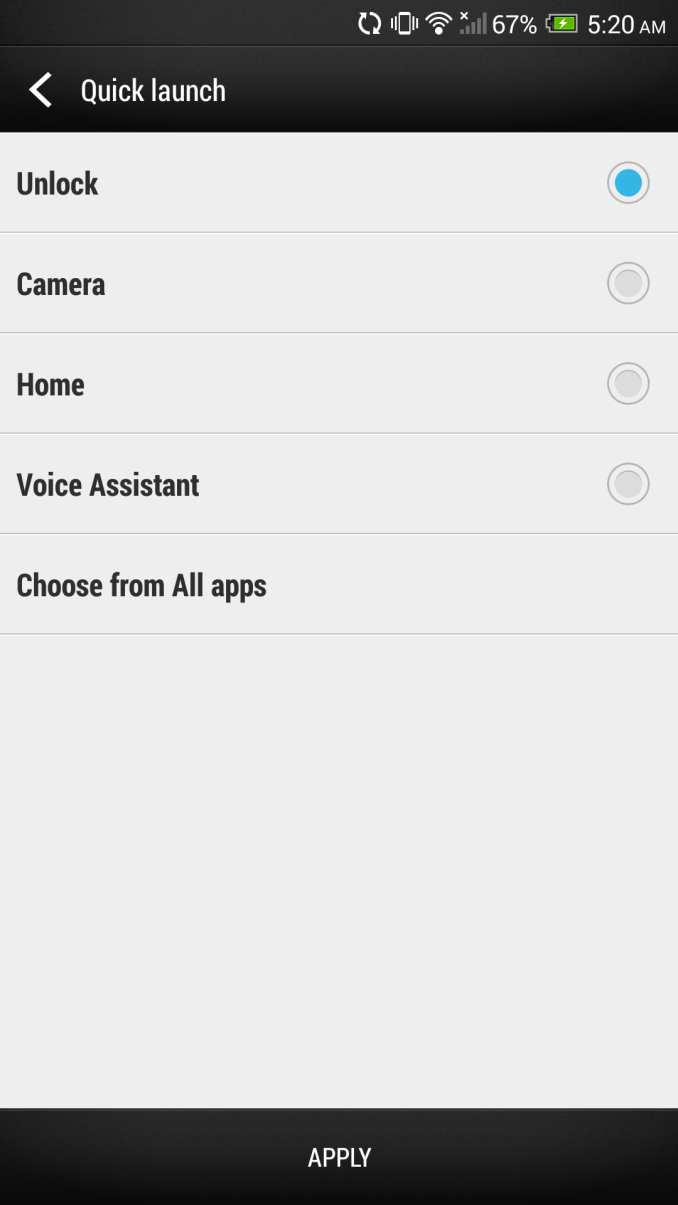








197 Comments
View All Comments
GruntboyX - Monday, October 28, 2013 - link
I love how the dimensions are reported in mm. However the screen size is in inches.MercuryStar - Tuesday, October 29, 2013 - link
As an Australian, this is absolutely normal here - we use mm for dimensions of all things except for diagonal screen size which is pretty much always quoted in inches - for everything from laptops to TVs to smartphones.nerd1 - Monday, October 28, 2013 - link
I always liked Brian's review for the most part for this time it's getting ridiculous.iPhone 5GS 64GB: $399 w/contract
Galaxy 4S 80GB (16GB+64GB sdXC): $199 w/ contract
Isn't it obvious to see the advantage? If you always have a bunch of 64GB devices around to review (and unlimited LTE) for free you may not know but to us mortals the saving of $200 far exceeds any inconveniences (if all) of managing them.
It's like arguing having only a single SSD storage for laptop is better than SSD+HDD hybrid because the former is faster, lighter and more failproof. Problem is not everyone can purchase 1TB of PCIe SSD, and some people prefer 128 SSD + 1TB HDD setup at a fraction of the cost.
MercuryStar - Tuesday, October 29, 2013 - link
I don't think the author is claiming that SD cards slots are bad, just that very few people use them, or would use the added capacity they would provide, thus making them a lower relative priority compared to other things like, in the case of this phone, added thickness and weight of the removable back.Someone else was saying in another comment that carriers who bundled phones with a free SD card in the box found that the majority of people still didn't use the SD card.
chizow - Tuesday, October 29, 2013 - link
I guess it never occurred to them that the bundled SD card is basically useless due to it's capacity and not it's utility? I don't use them either but with 2GB storage I can't even use to load a Windows ISO. I leave them in the box too, but replace them with my own 32 or 64GB card.....chizow - Tuesday, October 29, 2013 - link
Exactly, it's like all the reviewers out there getting free 128GB iPads to review and totally understanding Apple's position about not including a microSD slot. Yet they don't realize, most people don't want to pay $800-$900 for 128GB of storage and Cellular over the base $500 model....Mr Majestyk - Monday, October 28, 2013 - link
Why is the Sony Z Ultra missing, much more compelling device to me than One Max? Also why use 4 decimal places on the max brightness? Really, we don't even need a single decimal place for this measure, just round it to nearest integer. Human eye can't tell minute changes in brightness at the bright end, like it can at the dark end.piroroadkill - Tuesday, October 29, 2013 - link
Sony are killing it at the moment, in my opinion.By FAR the best mid-range handset for the money is the Xperia SP. At the high end you have the Xperia Z1, then for people who have gorilla hands, the Z Ultra.
All better phones than their counterparts by other manufacturers like HTC or Samsung. Yet, where are the reviews?
synaesthetic - Monday, October 28, 2013 - link
The amount of logical fallacies being committed in this comments section is staggering.Personally I'd prefer sdcard slots in my phones, but the reality is most people don't care or don't know or aren't familiar with their use. They're going away, slowly but surely. Samsung and Sony are really the only holdouts, with the exception of bargain-basement budget devices that cut internal eMMC down to 4GB or smaller to keep BOM cost as low as possible.
Those of us who want our phones to be purely functional powerhouses of mobile computing are sadly in the minority, and the market is absolutely a tyranny of the majority.
bairlangga - Monday, October 28, 2013 - link
Agree. Just snapped a 64gb sdxc uhs1 on my xperia yesterday. Couldn't be much happier ;-)